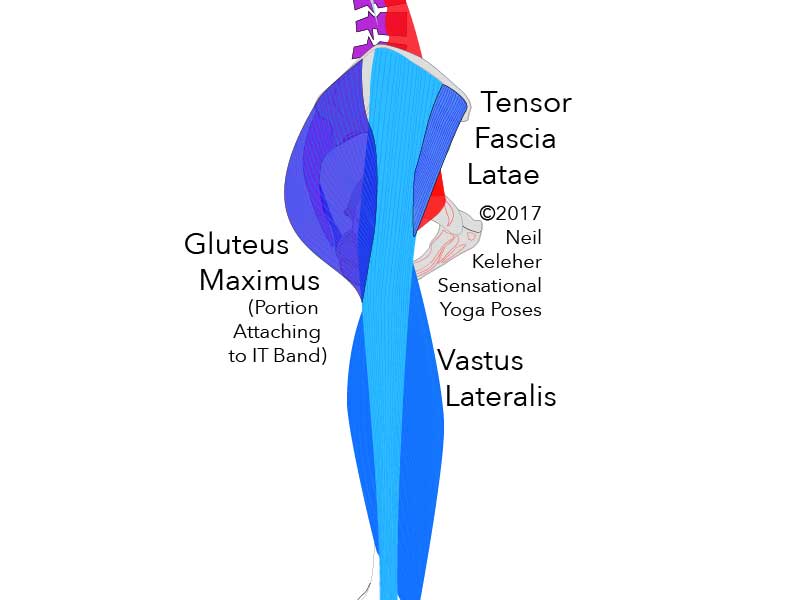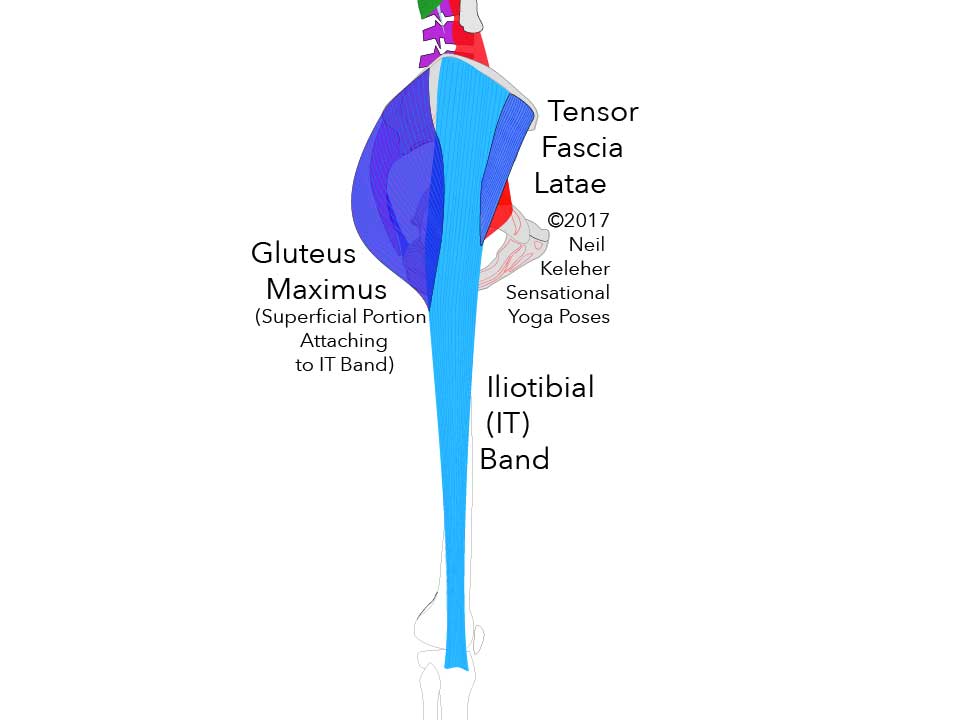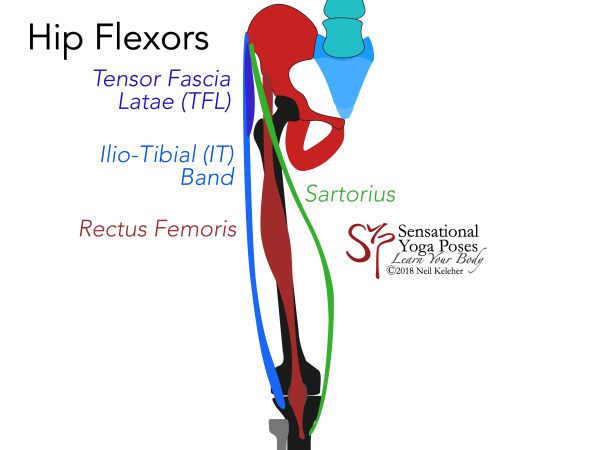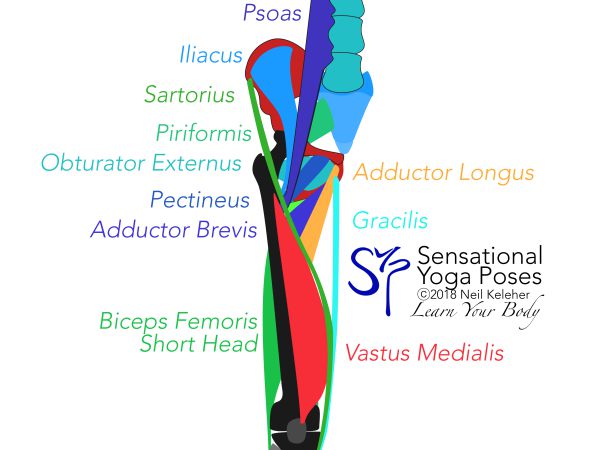Long Hip Flexor Muscles
Adding Tension to Take out the Slack For More Effective Forward Bending
For forward bending the hips with the knees straight (a.k.a. stretching the hamstrings), it's very helpful to learn to control the long hip flexor muscles, namely: the rectus femoris, sartorius, and tensor fascia latae.
I call them the long hip flexor muscles because they are long. They extend all the way from the hip bone to the tibia.
Leg muscles that attach at or near the ASIC
All of these hip flexor muscles attach to the pelvis at or near the ASICs (Anterior Superior Iliac Spine) the point at the front of the hip crest. The rectus femoris attaches a little lower.
The ASIC could be thought of as a major leverage point for the pelvis, just like the pubic bone, the sitting bones and even the PSIS the posterior superior iliac spine.
Why are the ASIC, PSIC, pubic bone and ischial tuberosities good points of leverage on the hip bone?
These four points could be thought of as the corner points of the hip bone. It's because they are corner points that they offer good leverage to the hip muscles (and other muscles like the obliques and quadratus lumborum) that attach there.
At the bottom end, these long hip flexor muscles attach either to the outside of the tibia, to the knee cap and the front of the tibia, or to the inside or the tibia, just below the knee joint.
- The tensor fascia latae attaches to the outside of the tibia.
- The rectus femoris attaches to the knee cap (and from there to the front of the tibia).
- The sartorius attaches to the inside of the tibia along with the gracilis and semitendinosus to form the pes anserinus or "goose foot".
The trick in using these muscles to effectively bend or flex the hips forwards, is taking out the slack, particularly when the knees are straight.
So for example, the tensor fascia latae attaches to the IT band which passes over the vastus lateralis muscle before attaching to the top of the tibia. The front edge of the IT band is basically an extension of the Tensor fascia latae, acting, if you like, as its tendon. This tendon runs over the vastus lateralis muscle.
To take the slack out of the IT band and make it easier to use the tensor fascia latae to flex the hip, activate the vastus lateralis.
Rectus femoris runs down the front of the thigh from the ASIC to the knee cap, running over the vastus intermedius as it does so.
To take the slack out of the rectus and make it easier to activate, particularly while bending forwards at the hips, try activating the vastus intermedius.
The sartorius muscle curves along an S-shaped path from the ASIC to the inner aspect of the top of the tibia. It runs between the bulk of the adductors and the vastus intermedius. Then, at the bottom half of the thigh, it passes just behind the vastus medialis.
Now you might think that to take the slack out of the sartorius all you have to do is activate the vastus medialis. And it may help. But in my experience so far, it seems to help if I activate the inner thigh muscles also, the adductors.
Note that in a standing forward bend, or even a seated forward bend, it's fairly easy to relax the quadriceps. So instead work at keeping them (and the adductors active) and see if that doesn't make it easier for you to use your hip flexors to bend your hips forwards (and so stretch your hamstrings).
Published: 2017 03 04
Updated: 2020 11 04







